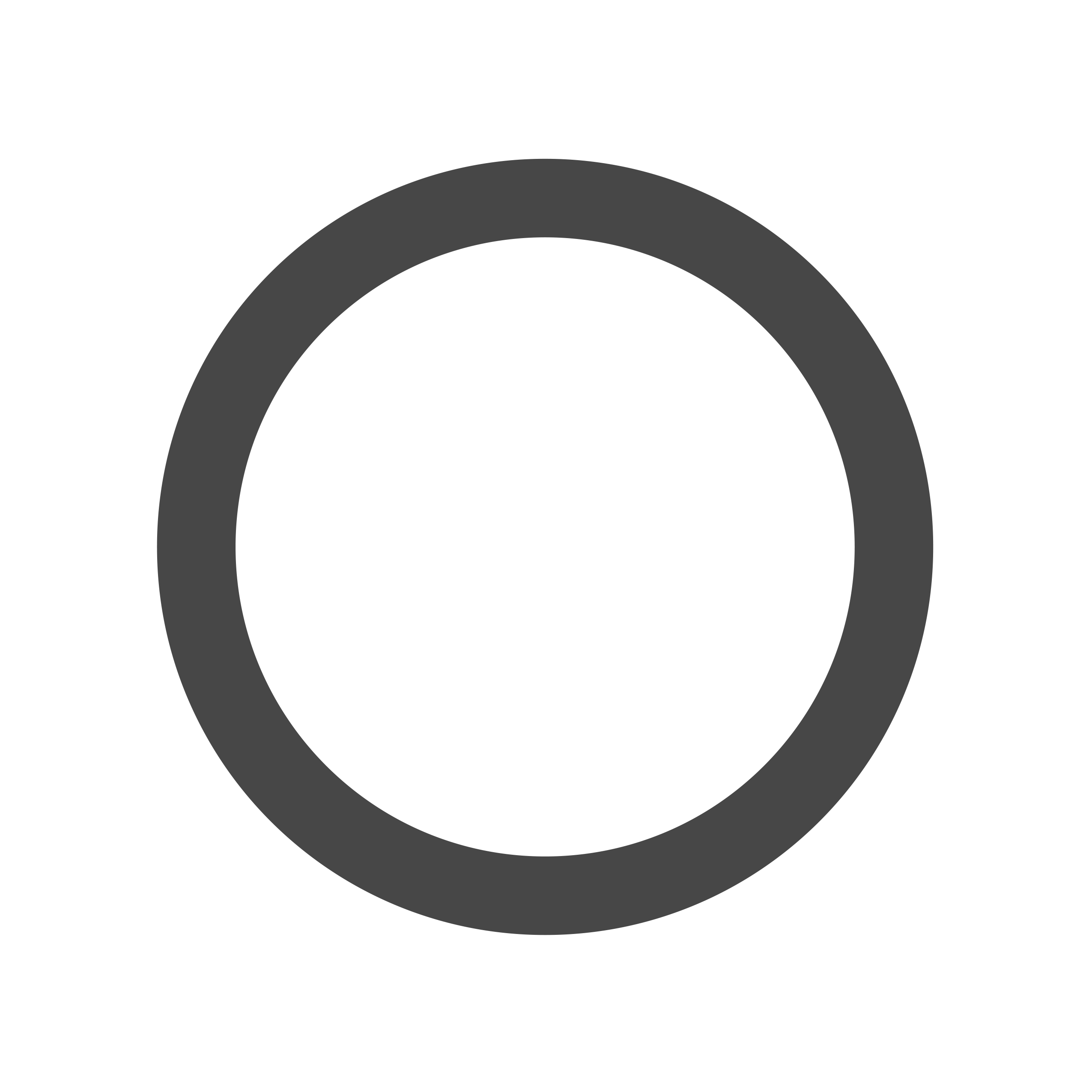






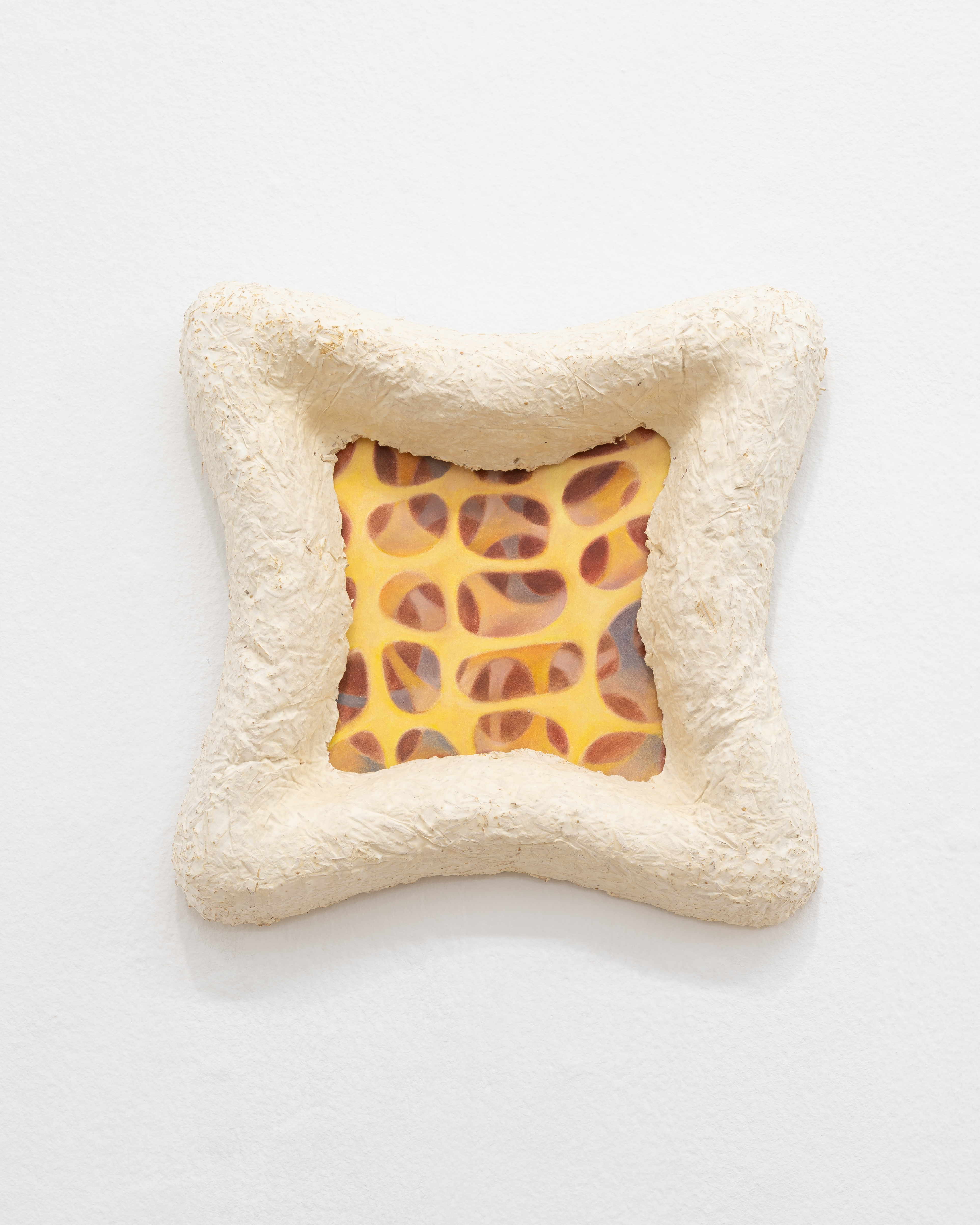


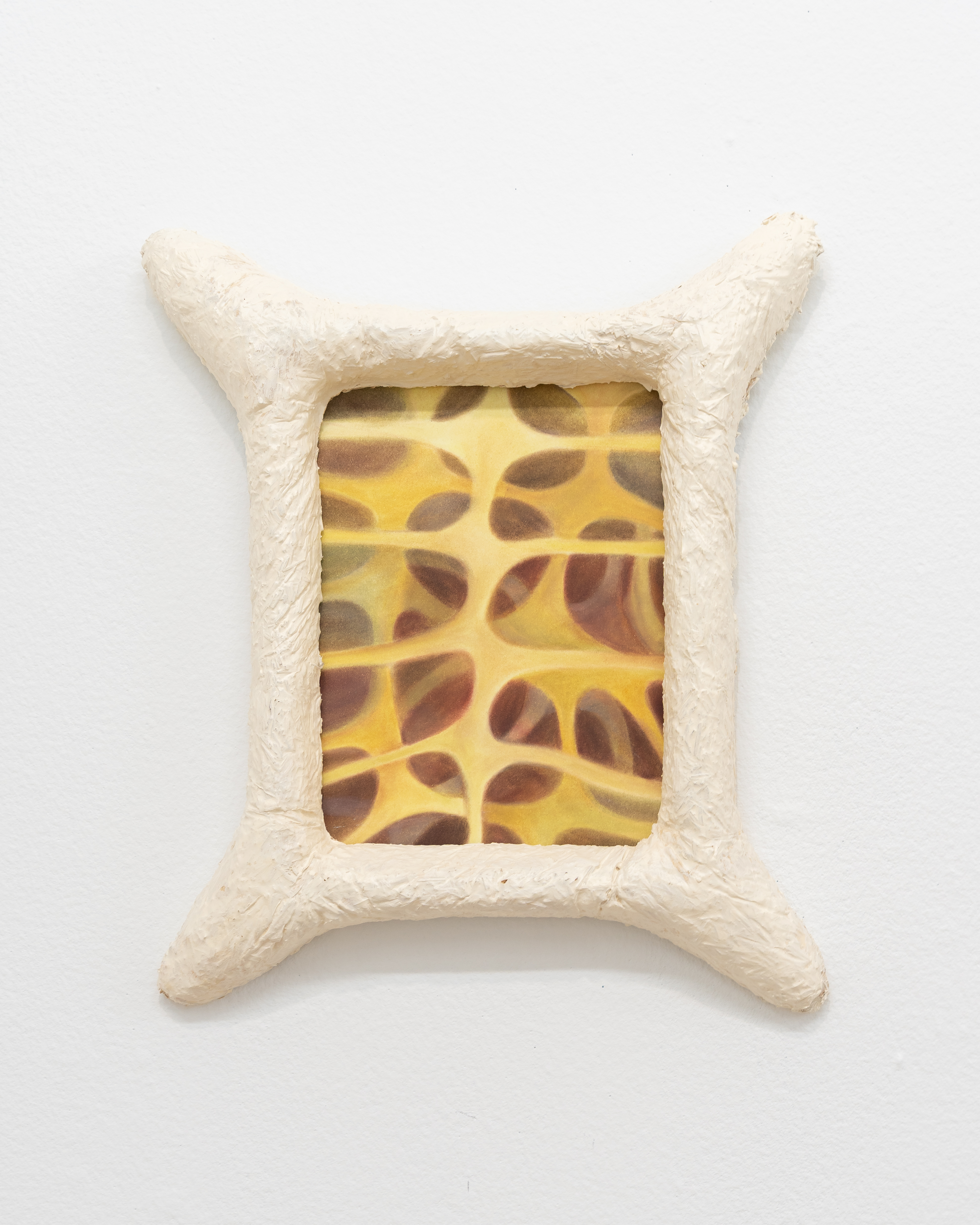












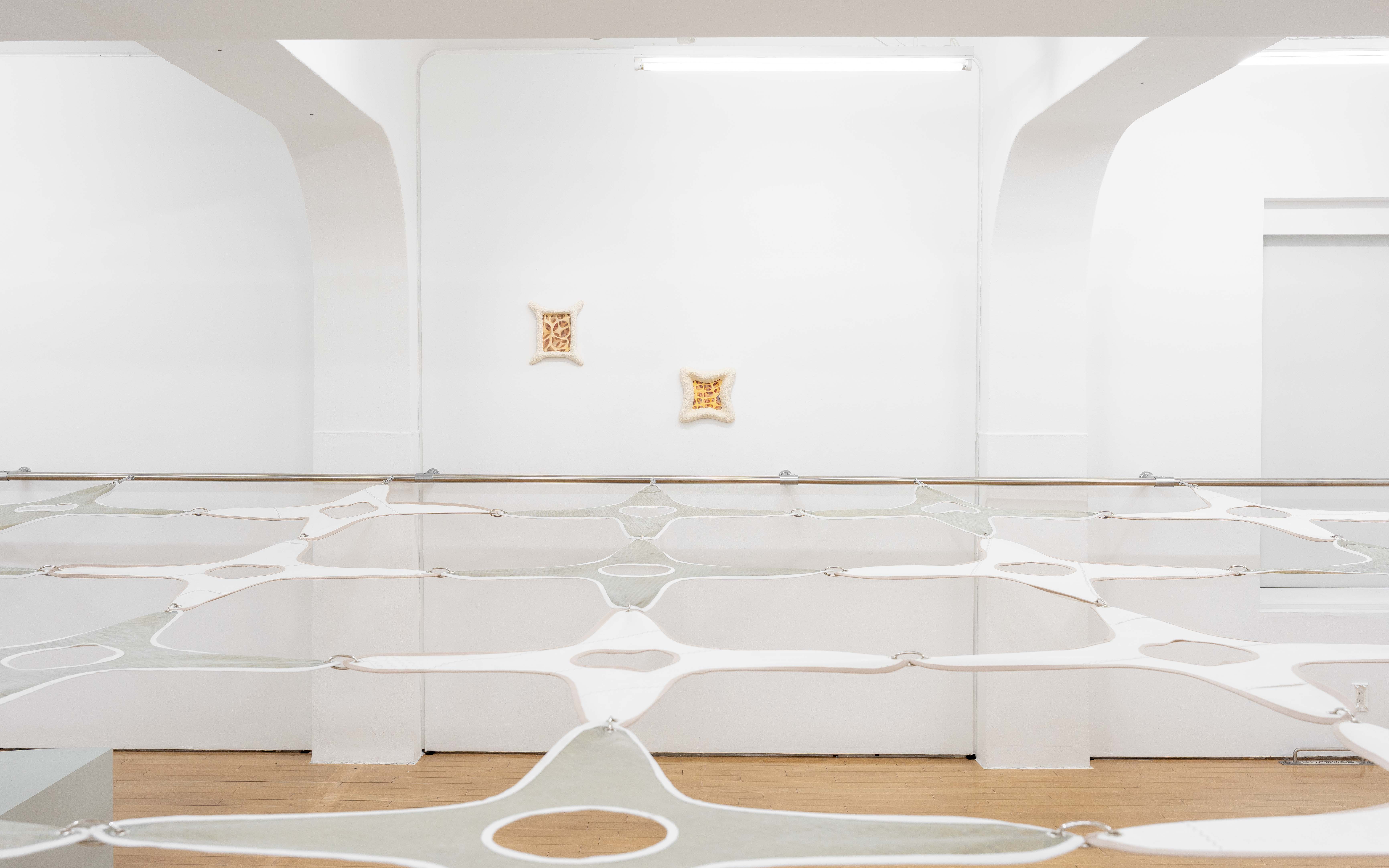


corps
commun
(FR) Corps Commun est une installation interactive et in situ qui s'étend sur l'ensemble de l'espace d'exposition, reliant 45 éléments fabriqués à partir de voiles de bateau surcyclées. Le projet comprend également neuf dessins réalisés aux pastels et présentés dans des cadres en mycélium.
L'installation explore l'interdépendance entre les individus et leur environnement, s'inspirant du mycélium—le réseau fongique souterrain essentiel à la cohésion des écosystèmes. Agissant comme messager entre des environnements distincts par l'échange de ressources et d'informations, le mycélium incarne une vision collaborative, holistique et interconnectée de l'écologie.
Conçu comme une constellation sociale participative, Corps Commun invite le public à explorer l'interconnexion à travers une structure collective qui décentralise l'individualité, favorisant une réflexion sur les influences mutuelles entre les humains et leur environnements. En intégrant le mycélium à la fois comme matériau et métaphore, accompagné de dessins inspirés du rhizome, l'installation rend visibles les réseaux invisibles mais fondamentaux qui soutiennent l'équilibre. À travers l'immersion sensorielle et la participation du public, l'installation réimagine des modèles d'interaction qui mettent en valeur l'adaptabilité, l'échange et la collaboration. En créant des ponts entre le corps, l'environnement et les systèmes sociaux, le projet engage une réflexion sur des structures sociales plus inclusives, durables et solidaires.
—
Examiner la société contemporaine à travers la pluralité des corps
Texte curatorial par Sawako Yoshida
Notre corps est conçu comme un organe par lequel nous percevons le monde qui nous entoure. Chacun·e d'entre nous est un·e sujet·te qui génère de la communication, reconnaît les autres et tisse des relations. Mais pourquoi l’existence humaine s’accompagne-t-elle de non pas un, mais de multiples « corps » ? L’un des éléments qui illustre cette pluralité du corps est sa fonction reproductrice. Chaque être humain naît de l’interaction de plusieurs corps, et depuis environ 200 000 ans, lorsque l’Homo sapiens serait apparu, l’histoire s’est déroulée comme une suite d’innombrables interactions entre des corps humains.
Par ailleurs, les avancées médicales permettent aujourd’hui d’extraire des parties du corps humain, comme des organes ou du sang, pour les greffer à d’autres corps en ayant besoin. En d’autres termes, il est possible de manipuler les corps vivants pour intégrer des parties provenant de plusieurs individus. De même, la prolifération des technologies numériques dans notre quotidien a favorisé une multiplication virtuelle des corps. Par exemple, les images d’avatars ou les corps modifiés par des applications incarnent des identités multiples qui transcendent la réalité physique.
Cette exposition, centrée sur l’existence plurielle des corps humains, présente les œuvres de Shikichi Osamu, Shoji Asami et Marion Paquette, trois artistes qui explorent dans leurs pratiques respectives les relations corporelles entre les individus.
Shikichi, en considérant la danse comme une forme de communication préalable à l’expression verbale, recherche des moyens de transmettre et d’internaliser les sensations générées par les interactions entre individus dans d’autres corps. Shoji traduit les mondes qu’elle explore avec son propre corps en espaces picturaux, invitant le spectateur à faire l’expérience de ses œuvres comme s’il naviguait entre son corps et celui de l’artiste. Le travail de Paquette, génère quant à lui des structures collectives qui intègrent des individus en coexistence et en interaction, construisant des espaces où les frontières entre privé et public s’estompent.
En se concentrant sur les relations subtiles entre les corps individuels, qui continuent de s’influencer mutuellement, les trois artistes révèlent la nature plurielle du corps humain. Ils rappellent ses facultés fondamentales d’imagination et de sensibilité, et inspirent à envisager de nouvelles façons d’étendre ou d’élargir cette pluralité à travers différentes formes de « corps ».
ACT (Artists Contemporary TOKAS) est une exposition spéciale mettant en avant des artistes menant des activités notables, parmi lesquels certain·e·s ayant déjà participé à des programmes de Tokyo Arts and Space (TOKAS).
L'installation explore l'interdépendance entre les individus et leur environnement, s'inspirant du mycélium—le réseau fongique souterrain essentiel à la cohésion des écosystèmes. Agissant comme messager entre des environnements distincts par l'échange de ressources et d'informations, le mycélium incarne une vision collaborative, holistique et interconnectée de l'écologie.
Conçu comme une constellation sociale participative, Corps Commun invite le public à explorer l'interconnexion à travers une structure collective qui décentralise l'individualité, favorisant une réflexion sur les influences mutuelles entre les humains et leur environnements. En intégrant le mycélium à la fois comme matériau et métaphore, accompagné de dessins inspirés du rhizome, l'installation rend visibles les réseaux invisibles mais fondamentaux qui soutiennent l'équilibre. À travers l'immersion sensorielle et la participation du public, l'installation réimagine des modèles d'interaction qui mettent en valeur l'adaptabilité, l'échange et la collaboration. En créant des ponts entre le corps, l'environnement et les systèmes sociaux, le projet engage une réflexion sur des structures sociales plus inclusives, durables et solidaires.
—
Examiner la société contemporaine à travers la pluralité des corps
Texte curatorial par Sawako Yoshida
Notre corps est conçu comme un organe par lequel nous percevons le monde qui nous entoure. Chacun·e d'entre nous est un·e sujet·te qui génère de la communication, reconnaît les autres et tisse des relations. Mais pourquoi l’existence humaine s’accompagne-t-elle de non pas un, mais de multiples « corps » ? L’un des éléments qui illustre cette pluralité du corps est sa fonction reproductrice. Chaque être humain naît de l’interaction de plusieurs corps, et depuis environ 200 000 ans, lorsque l’Homo sapiens serait apparu, l’histoire s’est déroulée comme une suite d’innombrables interactions entre des corps humains.
Par ailleurs, les avancées médicales permettent aujourd’hui d’extraire des parties du corps humain, comme des organes ou du sang, pour les greffer à d’autres corps en ayant besoin. En d’autres termes, il est possible de manipuler les corps vivants pour intégrer des parties provenant de plusieurs individus. De même, la prolifération des technologies numériques dans notre quotidien a favorisé une multiplication virtuelle des corps. Par exemple, les images d’avatars ou les corps modifiés par des applications incarnent des identités multiples qui transcendent la réalité physique.
Cette exposition, centrée sur l’existence plurielle des corps humains, présente les œuvres de Shikichi Osamu, Shoji Asami et Marion Paquette, trois artistes qui explorent dans leurs pratiques respectives les relations corporelles entre les individus.
Shikichi, en considérant la danse comme une forme de communication préalable à l’expression verbale, recherche des moyens de transmettre et d’internaliser les sensations générées par les interactions entre individus dans d’autres corps. Shoji traduit les mondes qu’elle explore avec son propre corps en espaces picturaux, invitant le spectateur à faire l’expérience de ses œuvres comme s’il naviguait entre son corps et celui de l’artiste. Le travail de Paquette, génère quant à lui des structures collectives qui intègrent des individus en coexistence et en interaction, construisant des espaces où les frontières entre privé et public s’estompent.
En se concentrant sur les relations subtiles entre les corps individuels, qui continuent de s’influencer mutuellement, les trois artistes révèlent la nature plurielle du corps humain. Ils rappellent ses facultés fondamentales d’imagination et de sensibilité, et inspirent à envisager de nouvelles façons d’étendre ou d’élargir cette pluralité à travers différentes formes de « corps ».
YOSHIDA Sawako
ACT (Artists Contemporary TOKAS) est une exposition spéciale mettant en avant des artistes menant des activités notables, parmi lesquels certain·e·s ayant déjà participé à des programmes de Tokyo Arts and Space (TOKAS).
(EN) Corps Commun (Common Body) is an interactive, site-specific installation that spans the entire exhibition space, connecting 45 elements crafted from upcycled boat sails.The project also includes nine pastel drawings presented in mycelium frames.
The installation explores the interdependence between individuals and their environment, drawing inspiration from mycelium—the underground fungal network essential to ecosystem cohesion. Acting as a messenger between distinct environments through the exchange of resources and information, mycelium embodies a collaborative, holistic, and interconnected vision of ecology.
Conceived as a participatory social constellation, Corps Commun invites audiences to engage with interconnectedness through a collective structure that decentralizes individuality, fostering reflection on the mutual influences between humans and their surroundings. By incorporating mycelium as both material and metaphor, alongside rhizomatic-inspired drawings, the installation makes visible the unseen yet fundamental networks that sustain balance. Through sensory immersion and audience participation, the project reimagines interaction models that prioritize adaptability, exchange, and collaboration. By creating connections between the body, the environment, and social systems, the project encourages reflection on more inclusive, sustainable, and solidaristic social structures.
—
Examining contemporary society based on the plurality of the body/ies
Curatorial text by Sawako Yoshida
Our body is built to functions as an organ by which we perceive the world around us. Every single one of us is a subject that generates communication, recognizes the people around, and builds relationships with them.
But why is it that human existence comes with not only one, but multiple “bodies”? One thing that facilitates the plural nature of the body, are its reproductive functions. A human is always born from multiple other bodies, and for about 200,000 years since Homo sapiens is said to have emerged, history unfurled as a string of countless interactions between one human body and another.
At the same time, advanced medical technology has enabled us to extract such individual human body parts as organs or blood, and transplant them into the bodies of people in need of those specific parts. In other words, it is possible to manipulate living bodies to integrate parts of multiple bodies of other human beings. The pervasion of digital technologies in everyday life promoted the virtual multiplication of individual bodies, whereas images of avatars or bodies modified using apps, for example, assume multiple identities through various aspects on levels other than physical reality.
This exhibition focusing on the plural existence(s) of (the) human body/ies, features works by Shikichi Osamu, Shoji Asami and Marion Paquette, three artists who examine in their respective works the mutual bodily relationships between human individuals.
Considering his dance as a form of communication at a stage prior to verbal formulation, Shikichi pursues ways of transferring and internalizing sensations generated through interactions between individuals, into other bodies. Shoji translates the worlds that she explores with her body into painted spaces, to create works that viewers are to experience in a way as if moving back and forth between their own and the artist’s body. Paquette’s creations are collective structures that incorporate human individuals in coexistence and interaction with each other, constructing spaces where the boundaries between private and public are blurred. Each focusing on the delicate relationships between individual bodies that continue to affect one another, the three artists create works that project the plural nature of the human body, remind us of the imaginative faculty and sensibility as its fundamental abilities, and inspire us to envision new possible ways of extending/expanding it into different forms of “bodies.”
*ACT (Artists Contemporary TOKAS) is a special exhibition introducing artists who practice notable activities, including those who have previously participated in other Tokyo Arts and Space (TOKAS) programs.
The installation explores the interdependence between individuals and their environment, drawing inspiration from mycelium—the underground fungal network essential to ecosystem cohesion. Acting as a messenger between distinct environments through the exchange of resources and information, mycelium embodies a collaborative, holistic, and interconnected vision of ecology.
Conceived as a participatory social constellation, Corps Commun invites audiences to engage with interconnectedness through a collective structure that decentralizes individuality, fostering reflection on the mutual influences between humans and their surroundings. By incorporating mycelium as both material and metaphor, alongside rhizomatic-inspired drawings, the installation makes visible the unseen yet fundamental networks that sustain balance. Through sensory immersion and audience participation, the project reimagines interaction models that prioritize adaptability, exchange, and collaboration. By creating connections between the body, the environment, and social systems, the project encourages reflection on more inclusive, sustainable, and solidaristic social structures.
—
Examining contemporary society based on the plurality of the body/ies
Curatorial text by Sawako Yoshida
Our body is built to functions as an organ by which we perceive the world around us. Every single one of us is a subject that generates communication, recognizes the people around, and builds relationships with them.
But why is it that human existence comes with not only one, but multiple “bodies”? One thing that facilitates the plural nature of the body, are its reproductive functions. A human is always born from multiple other bodies, and for about 200,000 years since Homo sapiens is said to have emerged, history unfurled as a string of countless interactions between one human body and another.
At the same time, advanced medical technology has enabled us to extract such individual human body parts as organs or blood, and transplant them into the bodies of people in need of those specific parts. In other words, it is possible to manipulate living bodies to integrate parts of multiple bodies of other human beings. The pervasion of digital technologies in everyday life promoted the virtual multiplication of individual bodies, whereas images of avatars or bodies modified using apps, for example, assume multiple identities through various aspects on levels other than physical reality.
This exhibition focusing on the plural existence(s) of (the) human body/ies, features works by Shikichi Osamu, Shoji Asami and Marion Paquette, three artists who examine in their respective works the mutual bodily relationships between human individuals.
Considering his dance as a form of communication at a stage prior to verbal formulation, Shikichi pursues ways of transferring and internalizing sensations generated through interactions between individuals, into other bodies. Shoji translates the worlds that she explores with her body into painted spaces, to create works that viewers are to experience in a way as if moving back and forth between their own and the artist’s body. Paquette’s creations are collective structures that incorporate human individuals in coexistence and interaction with each other, constructing spaces where the boundaries between private and public are blurred. Each focusing on the delicate relationships between individual bodies that continue to affect one another, the three artists create works that project the plural nature of the human body, remind us of the imaginative faculty and sensibility as its fundamental abilities, and inspire us to envision new possible ways of extending/expanding it into different forms of “bodies.”
YOSHIDA Sawako
*ACT (Artists Contemporary TOKAS) is a special exhibition introducing artists who practice notable activities, including those who have previously participated in other Tokyo Arts and Space (TOKAS) programs.
corps commun (common body)
2025
voiles de bateau surcyclées, acier, élastique, pastel sur papier sans acide, bois, mycelium, acrylic, vernis
Installation présentée dans le cadre de l’exposition ACT (Artists Contemporary TOKAS) Vol. 7 ‘PLURAL BODY/IES’, au Tokyo Arts and Space Hongo (TOKAS) du 22 février au 23 mars 2025
Installation presented as part of the PLURAL BODY/IES exhibition, at Tokyo Arts and Space Hongo (TOKAS) from February 22 to March 23, 2025
commissaire / curator
YOSHIDA Sawako
organisé par / organized by
Tokyo Arts and Space, Museum of Contemporary Art Tokyo, Tokyo Metropolitain Foundation for History and Culture
artistes / artists
Marion Paquette
SHIKICHI Osamu
SHOJI Asami
performance
corps commun P01 SH-AO-MP-CV
créée en collaboration avec
created in collaboration with
Shohei HOSOI, Ayano OTAKI, and Cléo VERSTREPEN
designer graphique / graphic designer
SEKIGAWA Kohei
+ d’informations ︎︎︎
remerciements / thanks
Merci à Michel Paquette, Michael Francey, Paul Guidera, Marie Perreault, Sita Singh, Laurence Boire, GU- Laboratoire pluridisciplinaire pour leur support dans la réalisation de ce projet. Merci à Sawako YOSHIDA et à toute l’équipe du Tokyo Arts and Space Hongo.
photos
Marion Paquette
or TAKAHASHI Kenji - Photo courtesy of Tokyo Arts and Space
catalogue / catalog
ACT (Artists Contemporary TOKAS) Vol. 7
︎︎︎Pour télécharger le catalogue ︎︎︎To download the catalog
2025
voiles de bateau surcyclées, acier, élastique, pastel sur papier sans acide, bois, mycelium, acrylic, vernis
Installation présentée dans le cadre de l’exposition ACT (Artists Contemporary TOKAS) Vol. 7 ‘PLURAL BODY/IES’, au Tokyo Arts and Space Hongo (TOKAS) du 22 février au 23 mars 2025
Installation presented as part of the PLURAL BODY/IES exhibition, at Tokyo Arts and Space Hongo (TOKAS) from February 22 to March 23, 2025
commissaire / curator
YOSHIDA Sawako
organisé par / organized by
Tokyo Arts and Space, Museum of Contemporary Art Tokyo, Tokyo Metropolitain Foundation for History and Culture
artistes / artists
Marion Paquette
SHIKICHI Osamu
SHOJI Asami
performance
corps commun P01 SH-AO-MP-CV
créée en collaboration avec
created in collaboration with
Shohei HOSOI, Ayano OTAKI, and Cléo VERSTREPEN
designer graphique / graphic designer
SEKIGAWA Kohei
+ d’informations ︎︎︎
remerciements / thanks
Merci à Michel Paquette, Michael Francey, Paul Guidera, Marie Perreault, Sita Singh, Laurence Boire, GU- Laboratoire pluridisciplinaire pour leur support dans la réalisation de ce projet. Merci à Sawako YOSHIDA et à toute l’équipe du Tokyo Arts and Space Hongo.
photos
Marion Paquette
or TAKAHASHI Kenji - Photo courtesy of Tokyo Arts and Space
catalogue / catalog
ACT (Artists Contemporary TOKAS) Vol. 7
︎︎︎Pour télécharger le catalogue ︎︎︎To download the catalog
©marion paquette, 2025
![]()
La création de cette œuvre est rendue possible grâce à l’appui financier du Conseil des arts et des lettres du Québec (CALQ).
The creation of this work was made possible thanks to the financial support of the Conseil des arts et des lettres du Québec (CALQ).
![]()
![]()
![]()
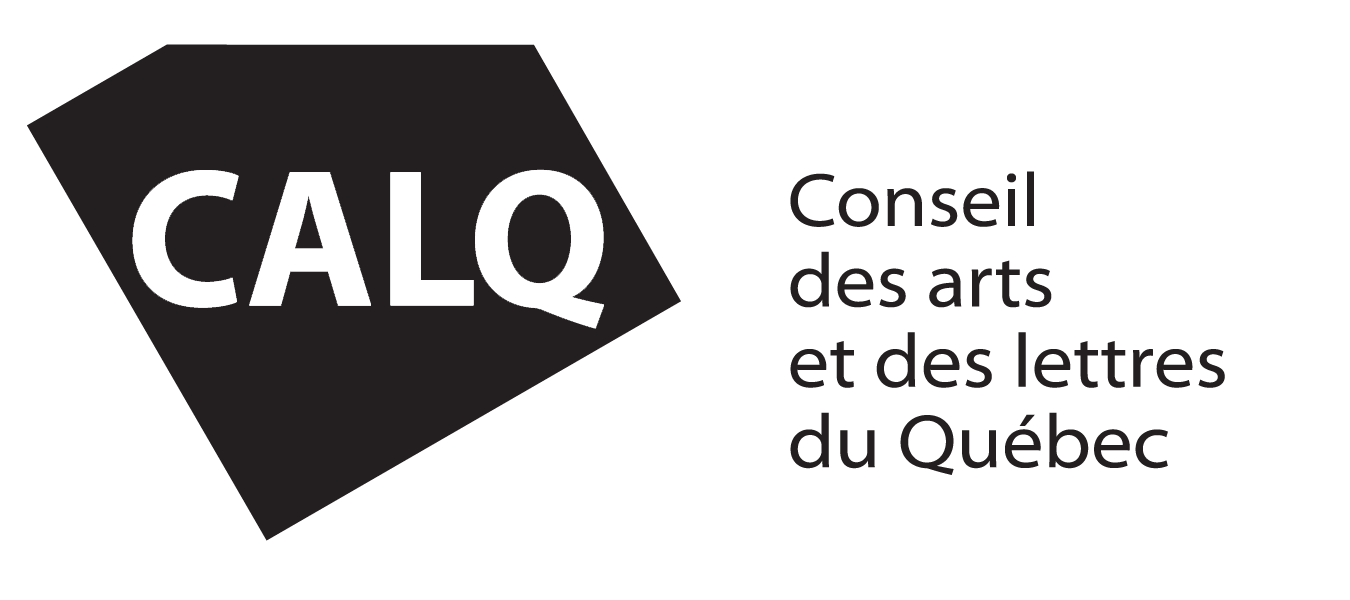
La création de cette œuvre est rendue possible grâce à l’appui financier du Conseil des arts et des lettres du Québec (CALQ).
The creation of this work was made possible thanks to the financial support of the Conseil des arts et des lettres du Québec (CALQ).
















performance
corps commun P01 SH-AO-MP-CV
créée en collaboration avec
created in collaboration with
Shohei HOSOI, Ayano OTAKI, and Cléo VERSTREPEN
corps commun P01 SH-AO-MP-CV
créée en collaboration avec
created in collaboration with
Shohei HOSOI, Ayano OTAKI, and Cléo VERSTREPEN
Video documentation
OHNO Ryusuke
Video courtesy of Tokyo Arts and Space
OHNO Ryusuke
Video courtesy of Tokyo Arts and Space
